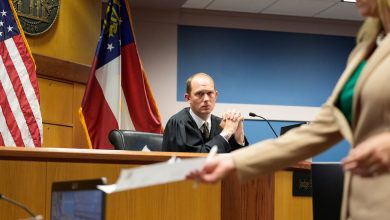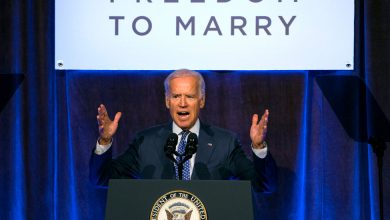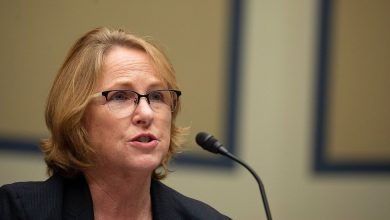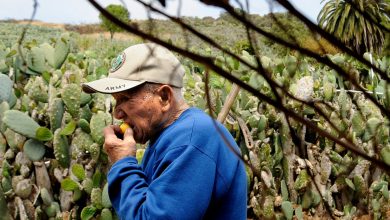Kyle Rittenhouse’s Homicide Trial Will Be a Debate Over Self-Defense

KENOSHA, Wis. — After more than a year, Kyle Rittenhouse, the teenager from Illinois who has been labeled by some as a defender of law and order and by others as a reckless gunman, is set to stand trial on charges of homicide in a Wisconsin courtroom starting on Monday.
In Kenosha, a former factory town on the shore of Lake Michigan, the proceedings will take place in the county courthouse that was the stage for demonstrations that erupted in August 2020 after a white police officer shot Jacob Blake, a Black resident, seven times in the back during an arrest. For several days, protesters of police violence thronged Kenosha by the thousands, and rioters burned buildings and looted businesses, overwhelming police officers and National Guardsmen.
The third night of protests turned deadly when Mr. Rittenhouse, who was then 17, came to Kenosha with a military-style semiautomatic rifle and joined a group of people who said they were there to help keep order on the streets. Within hours, Mr. Rittenhouse had shot and killed two men and wounded a third during a confrontation.
Mr. Rittenhouse is facing six criminal counts, including first-degree reckless homicide, first-degree intentional homicide and attempted first-degree intentional homicide.
The trial will revive the question of what constitutes self-defense in a country where similar high-profile cases, including the trial of George Zimmerman in Florida in 2013, have ended in acquittal — and where firearms are increasingly a part of everyday American life, especially after a surge of gun buying during the coronavirus pandemic.
The case has also become another flash point in the nation’s political divide over the protests and rioting that have swept through American cities in recent years in response to police violence toward Black people. For some people on the left, Mr. Rittenhouse is seen as a blithe and dangerous intruder into a meaningful protest; on the right, some view him as a hero who intended to help protect lawless streets.
“It’s a battle of the narratives,” said Steven Wright, a law professor at the University of Wisconsin. “People will either see this as a young man who came across state lines with a weapon intending to do trouble, or people will come with the belief that he came here with a medical kit and attempted to defend the law and defend people.”
The proceedings will push Kenosha, a city of 100,000, back into the national spotlight. Since last year’s protests, many residents have pushed for a broader reckoning over race and changes to the Police Department, including body cameras and bias training. A county prosecutor declined to criminally charge Rusten Sheskey, the officer who shot Mr. Blake, a decision that caused a ripple of protest in January. Mr. Blake, who was partially paralyzed in the shooting, has moved out of Kenosha, determined never to return, his family said.
The trial of Mr. Rittenhouse is expected to last two to three weeks, with jury selection beginning on Monday.
Lawyers for Mr. Rittenhouse will argue that he was acting in self-defense when he killed Joseph Rosenbaum, 36, who a witness said had reached for Mr. Rittenhouse’s gun and was captured on video pursuing him. As Mr. Rittenhouse fled down the street, he shot two other men in pursuit, killing Anthony Huber, 26, who had tried to strike Mr. Rittenhouse with a skateboard, and wounding Gaige Grosskreutz, a medic from West Allis, Wis.
Mr. Rittenhouse has said that he was in Kenosha the night of Aug. 25 to protect businesses from destruction amid the protests of the police. “This wasn’t him taking potshots at looters,” Corey Chirafisi, a lawyer for Mr. Rittenhouse, said in a court hearing. “Mr. Rosenbaum was chasing him. That started the whole thing.”
Prosecutors contend that Mr. Rittenhouse was an interloper from Antioch, Ill., about a 30-minute drive from Kenosha, who was intent on disrupting protests with violence.
“The defendant came to our community,” Thomas Binger, an assistant district attorney, said during a recent pretrial hearing on the case. “He’s not a resident, he’s underage, he’s out after curfew, he’s armed with an illegal weapon. Why? That is the question.”
Jurors in Kenosha County will be asked to revisit the events of that night and decide whether Mr. Rittenhouse, who is now 18, was acting reasonably when he used lethal force during a confrontation.
Under Wisconsin law, someone can lawfully use deadly force only if he or she “reasonably believes that such force is necessary to prevent imminent death or great bodily harm to himself or herself.” In Wisconsin, there is no “duty to retreat” before using force, and prosecutors will have to convince the jury that Mr. Rittenhouse’s belief was unreasonable. In a question unrelated to self-defense, Mr. Rittenhouse also faces an illegal possession charge; minors in Wisconsin are not allowed to possess firearms or carry them in public, with certain exceptions for hunting.
The jury will be presented videos and testimony from bystanders and journalists that captured the killings and the events leading up to them.
That evening, three days into the demonstrations over the Blake shooting, violence erupted in downtown Kenosha: Protesters threw fireworks at police officers, who responded with tear gas and rubber bullets. Residents dressed in camouflage and carrying rifles patrolled the area, explaining that they had come because police officers and National Guardsmen had been badly outnumbered the night before, allowing people to burn businesses and terrify city residents.
After police officers forced protesters out of the park, most of them left the area to go home. But dozens of people — including Mr. Rosenbaum, whose reason for being there was not clear — remained. They clustered on nearby Sheridan Road, arguing, shoving one another and setting trash cans on fire, with other armed civilians nearby, including Mr. Rittenhouse, saying they were there to protect businesses. Law enforcement officers in armored vehicles monitored the groups without stopping them — at one point, they even offered bottles of water to Mr. Rittenhouse and others.
In the moments before Mr. Rittenhouse began firing his weapon, Mr. Rosenbaum chased him into a used-car lot and, according to at least one witness, reached for the barrel of Mr. Rittenhouse’s rifle.
“The jury is going to be given this open-ended question to answer: Did Rittenhouse behave reasonably or not?” said Michael O’Hear, a law professor at Marquette University Law School in Milwaukee. “The answer could be highly dependent on who the jurors are, especially in a case like this that has such political undertones.”
Jury selection could extend for several days, and Judge Bruce Schroeder of the Kenosha County Circuit Court, the longest-serving circuit court judge in Wisconsin, said he had requested an unusually large jury pool of close to 150 potential jurors.
Mary D. M. Fan, a law professor at the University of Washington, said that while the trial would focus on the definition of self-defense, it would also be about the Second Amendment, race, politics and the role of free speech.
“Let’s be real — why is this such a polarizing case?” she said. “It’s also a referendum on fiercely different views on protests that have rocked this nation.”





